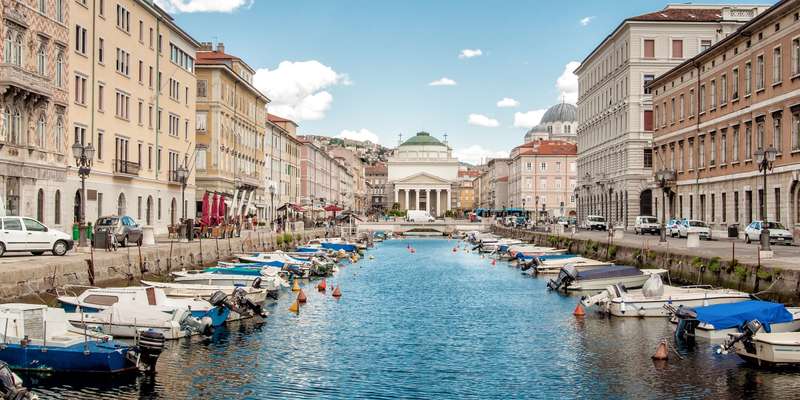- Home
- Useful Tips
- Trieste's literary cafés:...
Literary pilgrims often arrive in Trieste with dog-eared copies of 'Ulysses,' only to find themselves overwhelmed by the city's layered history and scattered Joyce landmarks. Unlike museum-style attractions, the writer's authentic haunts blend into everyday café life, leaving visitors to wander aimlessly past unmarked buildings. A 2023 survey revealed 68% of Joyce enthusiasts leave Trieste without seeing key sites, while 41% waste hours in tourist traps that posthumously adopted the writer's name. The frustration mounts when you realize Joyce spent nearly a decade here crafting his modernist masterpieces – his ghost lingers in espresso-scented corners, but only those who know where to look.


Decoding Joyce's real hangouts versus tourist traps
The challenge begins at Trieste's central Piazza Unità, where multiple cafés claim Joyce as a regular. While the opulent Caffè degli Specchi makes for Instagram-worthy photos, locals know the writer actually frequented simpler establishments where he could nurse a single coffee for hours. The real gems hide in plain sight: Antico Caffè San Marco still bears the intellectual atmosphere that attracted Joyce, with original wood paneling and literary events in the back room. A five-minute walk toward the canal brings you to Caffè Stella Polare, where the writer drafted portions of 'A Portrait of the Artist as Young Man' beneath now-faded Art Nouveau ceilings. These working-class cafés offered what Joyce needed – affordable drinks, tolerance for long stays, and stimulating conversation with Trieste's polyglot residents.
Timing your café crawl like a Joyce scholar
Modern Trieste operates on a different rhythm than Joyce's 1904-1915 residency, requiring strategic timing to experience the cafés as he did. Mornings at Caffè Pirona reveal why this pastry shop became Joyce's breakfast choice – the crisp kiflice rolls still emerge from the oven at 7:30am, just as they did when the writer fueled his writing sessions. Late afternoons transform Caffè Tommaseo into a time capsule, when golden light filters through the same nineteenth-century windows that illuminated Joyce's newspaper reading. Come evening, skip the crowded bars and head to Libreria Antiquaria Umberto Saba near Via San Nicolò. Though not a café, this bookshop preserves the literary spirit Joyce adored, with Thursday night readings that continue the tradition of multilingual exchange that shaped his work.
Mapping Joyce's creative process through Trieste's neighborhoods
Joyce's relationship with Trieste evolved across three distinct neighborhoods, each offering cafés that fueled different creative phases. His first residence near the Greek Orthodox church placed him within steps of Caffè Municipio (now closed), where initial 'Dubliners' stories took shape amid the clatter of Habsburg bureaucrats. The move to Via Donato Bramante brought regular walks past Caffè Garibaldi, whose political debates seeped into 'Ulysses' revolutionary themes. Most poignant is the third-floor apartment on Via della Sanità, where a struggling Joyce penned 'Giacomo Joyce' – the nearby Caffè Torinese remains virtually unchanged, its marble counters bearing the scratches of a century's worth of writers' restless pens. Smart visitors follow this geographic progression to understand how Trieste's cafés didn't just host Joyce's writing, but actively influenced his modernist style through their unique blend of Italian, Slavic, and Central European cultures.
Experiencing the cafés beyond surface-level visits
To truly walk in Joyce's footsteps requires engaging with Trieste's café culture as he did – not as a spectator, but as a participant. At Antico Caffè San Marco, order a 'nero in B' (coffee in a glass) and claim one of the small wooden tables near the bookshelves, where Joyce likely sat to observe the chess players who inspired 'Finnegans Wake' characters. Ask baristas about the 'tazza sospesa' tradition – leaving a paid coffee for struggling artists – which persists from Joyce's era. If visiting in October, time your trip with the Joyce School conference, when scholars lead informal café discussions about the writer's Trieste years. These immersive experiences reveal what guidebooks miss: that Joyce's legacy lives not in plaques or museums, but in the ritual of lingering over coffee while ideas take shape, just as they did for literature's greatest modernist.



